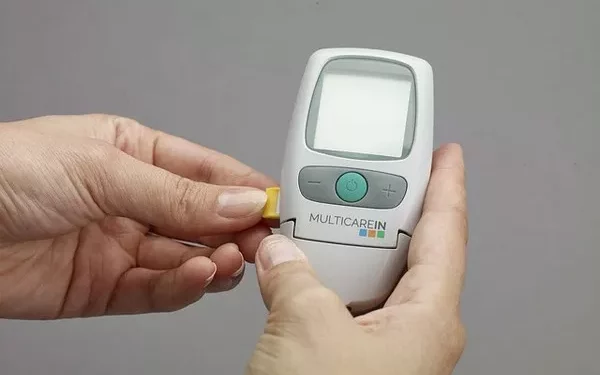Diabetes is one of the most prevalent chronic diseases worldwide, affecting millions of individuals across different age groups and demographics. Central to the management and prevention of diabetes is understanding blood glucose levels and their healthy ranges. Blood glucose monitoring is an essential tool for individuals with diabetes, healthcare providers, and researchers, helping track changes in blood sugar and prevent complications associated with abnormal levels.
A key aspect of managing diabetes is knowing what constitutes a “healthy” blood glucose level. This article explores the factors that influence glucose levels, the recommended ranges for healthy individuals and those with diabetes, and the role of blood glucose monitoring in maintaining optimal health.
What is Blood Glucose and Why is it Important?
Blood glucose (or blood sugar) is the main type of sugar found in the blood. It is the body’s primary source of energy and is derived from the food we eat, especially carbohydrates. When we consume food, the digestive system breaks down carbohydrates into glucose, which is then absorbed into the bloodstream. Insulin, a hormone produced by the pancreas, helps move glucose from the bloodstream into the cells for energy production or storage.
However, the balance of blood glucose is fragile. Too much glucose in the bloodstream (hyperglycemia) can lead to long-term complications, while too little glucose (hypoglycemia) can cause immediate, dangerous symptoms like dizziness, confusion, or loss of consciousness. Monitoring and maintaining a healthy blood glucose level is essential to prevent both short-term and long-term health issues.
What is Considered a Healthy Average Blood Glucose Level?
For individuals without diabetes, the average blood glucose level typically falls within a specific range. These levels can vary slightly based on factors such as age, diet, physical activity, and individual health conditions. However, there are general guidelines for what constitutes a healthy glucose range.
1. Fasting Blood Glucose (before eating):
Normal Range: 70 to 100 mg/dL (3.9 to 5.6 mmol/L)
Pre-diabetes Range: 101 to 125 mg/dL (5.6 to 6.9 mmol/L)
Diabetes Range: 126 mg/dL or higher (7 mmol/L or higher)
A fasting blood glucose level measures the amount of sugar in the blood after an overnight fast, typically measured in the morning before eating. In healthy individuals, the body’s regulatory mechanisms keep blood glucose levels stable throughout the night.
2. Postprandial Blood Glucose (after eating):
Normal Range: Less than 140 mg/dL (7.8 mmol/L) two hours after eating
Pre-diabetes Range: 140 to 199 mg/dL (7.8 to 11 mmol/L)
Diabetes Range: 200 mg/dL or higher (11.1 mmol/L or higher)
Postprandial glucose is measured two hours after eating, at which point the glucose from the consumed food should have entered the bloodstream. In individuals without diabetes, the body’s insulin response helps quickly bring blood glucose levels back to normal.
3. Hemoglobin A1c (HbA1c):
The A1c test measures the average blood glucose level over the past two to three months by looking at the percentage of glucose attached to hemoglobin (the protein in red blood cells). This is a useful long-term measure of glucose control.
Normal Range: Below 5.7%
Pre-diabetes Range: 5.7% to 6.4%
Diabetes Range: 6.5% or higher
For most people with diabetes, maintaining an HbA1c level of less than 7% is recommended to reduce the risk of complications. However, individualized goals may be set based on factors such as age, comorbidities, and duration of diabetes.
How Do Blood Glucose Levels Vary Throughout the Day?
Blood glucose levels are not static and tend to fluctuate throughout the day based on various factors, including food intake, physical activity, stress, medications, and overall health. The following chart illustrates how blood glucose levels may change over a 24-hour period in healthy individuals:
Morning (Fasting): Blood glucose levels tend to be at their lowest in the morning after fasting overnight. A normal fasting blood glucose level should fall between 70 and 100 mg/dL.
Pre-meal: Before eating, glucose levels may slightly rise, but they should generally remain within the normal range (below 100 mg/dL for most individuals).
Post-meal: After eating, blood glucose levels rise temporarily as the body absorbs the glucose from the food. In healthy individuals, these levels should peak within 30 minutes to an hour and return to normal within two hours. This is due to the insulin response, which facilitates the uptake of glucose into cells.
Bedtime: In the evening, glucose levels may rise slightly, but they should still fall within the normal range. It is essential to monitor for potential nocturnal hypoglycemia (low blood sugar), especially in individuals with diabetes who are on insulin or other medications that can lower blood sugar.
Factors That Affect Blood Glucose Levels
Several factors can influence blood glucose levels, and understanding these variables is crucial in managing healthy glucose levels:
1. Diet: The types of foods consumed have a significant impact on blood glucose. Foods high in carbohydrates, particularly simple sugars and refined grains, can cause rapid spikes in blood sugar. On the other hand, foods high in fiber, lean proteins, and healthy fats tend to have a more gradual effect on blood glucose levels.
2. Physical Activity: Exercise helps lower blood glucose by increasing insulin sensitivity and facilitating glucose uptake by muscles. Regular physical activity is an essential part of managing blood glucose levels, particularly for individuals with pre-diabetes or diabetes.
3. Medications: Medications, including insulin and oral hypoglycemic agents, are commonly used to help regulate blood glucose levels in individuals with diabetes. The timing, dosage, and type of medication can influence glucose levels throughout the day.
4. Stress: When the body is stressed, it releases hormones like cortisol and adrenaline that can raise blood glucose levels. Chronic stress can contribute to consistently elevated glucose levels, potentially leading to the development of type 2 diabetes.
5. Illness: During illness, the body’s immune response can cause temporary increases in blood glucose. Infections or conditions like the flu or a cold can lead to fluctuations in glucose levels, making monitoring even more important during periods of illness.
6. Sleep: Lack of sleep can negatively impact insulin sensitivity, leading to higher blood glucose levels. A consistent and adequate sleep schedule is important for maintaining healthy glucose control.
Blood Glucose Monitoring: Why and How to Monitor?
Regular blood glucose monitoring is essential for individuals with diabetes and those at risk of developing the condition. Self-monitoring allows individuals to track their glucose levels and make informed decisions about their diet, exercise, and medication. It also helps healthcare providers adjust treatment plans as needed to ensure optimal glucose control.
There are two primary methods of blood glucose monitoring:
1. Fingerstick Blood Glucose Meters: This method involves pricking the fingertip with a lancet to obtain a small blood sample. The blood is then placed on a test strip, which is inserted into a glucose meter to measure the blood glucose level. This method provides immediate results and is typically used for regular monitoring, especially for individuals with diabetes.
2. Continuous Glucose Monitors (CGMs): CGMs are wearable devices that continuously monitor glucose levels throughout the day and night. They provide real-time data, allowing individuals to track fluctuations in blood sugar and make adjustments to their lifestyle or treatment as necessary. CGMs are especially useful for individuals who have difficulty maintaining stable blood glucose levels or for those who experience hypoglycemic episodes.
The Importance of Maintaining Healthy Blood Glucose Levels
Maintaining healthy blood glucose levels is crucial for preventing both immediate and long-term complications of diabetes. High blood glucose (hyperglycemia) can lead to:
Short-term effects: These include fatigue, increased thirst, frequent urination, blurred vision, and slow-healing wounds. Severe hyperglycemia can lead to diabetic ketoacidosis (DKA) or hyperosmolar hyperglycemic state (HHS), both of which are medical emergencies.
Long-term effects: Over time, consistently high blood glucose levels can damage blood vessels and nerves, leading to complications such as cardiovascular disease, kidney disease, nerve damage (neuropathy), and retinopathy (damage to the eyes). It can also increase the risk of stroke and amputations.
Conversely, low blood glucose (hypoglycemia) can cause symptoms such as shaking, sweating, confusion, dizziness, and in severe cases, loss of consciousness or seizures. For individuals on insulin or certain medications, hypoglycemia is a risk, especially if meals are skipped or there is excessive physical activity without appropriate glucose intake.
By keeping blood glucose levels within a healthy range, individuals can reduce the risk of these complications, improve overall well-being, and enhance their quality of life.
Conclusion:
Maintaining healthy blood glucose levels is essential for everyone, particularly for individuals at risk of or living with diabetes. A balanced diet, regular physical activity, stress management, and effective monitoring are key strategies for maintaining glucose control. Blood glucose levels fluctuate throughout the day, and it is important to monitor these changes to ensure they remain within a healthy range.
For those living with diabetes, blood glucose monitoring is a powerful tool in managing the condition and preventing complications. By understanding what constitutes a healthy average glucose level, individuals can take proactive steps to maintain their health, in partnership with healthcare providers.
Related topics:
How Does a Glucometer Measure Blood Sugar Accurately?























